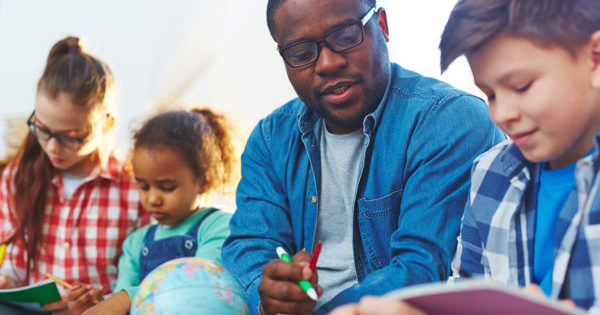
Sometimes when we say a lesson “went well,” we mean that we managed to “get through the lesson” without a classroom disaster. A lesson that’s “going well” is often equivalent to a classroom where students are working, remaining quiet, or appearing engaged. But how do we really know if students are actually learning in class? How do we know if they’ll remember the lesson tomorrow? Here are some practical ways to take your practice beyond I survived to my students thrived.
What’s the Assignment? Task-Based Lesson Planning
Assignments aren’t for keeping kids busy. They are the vehicle through which our students clearly and authentically demonstrate their learning. And thus, they’re an evaluation tool for teachers to assess if a lesson met its objectives. So, giving our student tasks some serious consideration makes determining a lesson’s success that much clearer.
To begin, set your lesson’s learning goal, and then list any skills required to learn or demonstrate this learning goal. Next, design a learning task that provides a challenging pathway for students to use the identified skills and show an understanding of the content. Finally, go back and consider what students need to know to complete this task. What steps are needed to prepare learners for this demonstration? Will doing this task truly show you whether they’ve learned the lesson?
Keep Asking: What are the Students Doing?
In the planning and teaching of every lesson, ask yourself this: What are the students doing at each stage of the lesson experience? Perhaps they are out of their seats and gathered around a table with you for a hands-on demonstration. Maybe they’re competing to come up with the most questions to challenge a concept. Or, perhaps they are merely listening to information in their seats and then regurgitating it on a worksheet? (Hey, worksheets have a place, but it can be way too easy to fall back on the old standbys.)
Try this: Go through your lesson and ask the question above at each stage of the plan. In doing so, you’ll begin to see the lesson experience from the learner’s view. Are students sitting and listening for too long? Switch it up to something more active. Are they writing too much or not enough? Adjust! And pay attention during the lesson to what students are doing compared to the method of engagement you planned. Are they on their phones? Staring into space? Or are they busy filling up that list of awesome questions? Let what students are doing become not only a forethought but a gauge for whether they are learning.
Check for Misconceptions
As teachers, we are often so focused on what we want students to understand that we often forget what misunderstandings can look like. When we prepare for misconceptions in our lesson plans, we are better prepared to avoid and resolve them. To begin, go through your lesson objectives and the content. What could be misunderstood? How might it be misunderstood? How can you try to avoid those misunderstandings? How can you resolve them if they do arise? Regularly check for understanding throughout a lesson, and utilize your misconception plans. By better anticipating a lesson’s confusion points, you can better ensure student learning.
Reflection, Reflection, Reflection
How do students know when they’re learning? Reflection. From informal to formalized reflections, the idea is to guide students toward a habit of self-examination, analysis, and revision of their assignments. And while the word “reflection” can suffer from pedagogical overuse, eliciting groans and moans, remember to convey that in the outside world, people habitually assess their understanding of new concepts, check over their work, and make revisions. Providing diverse opportunities for self-assessment keeps the practice fresh and effective, giving students varied methods but a consistent practice.
Metacognition
When students continually reflect, they become increasingly able to self-articulate why, how, and what they’re learning. Over time, this metacognition allows a student to more independently assess their learning and communicate their progress. This, in turn, helps teachers more easily take account of student learning in the classroom. Exit tickets, share-outs, reflections, and taking time to close a class to take stock of the day’s learning helps cement it all into a memorable summation. Some examples include asking for a description of the day’s learning and why it’s important, or using hand gestures (like displaying a 3-2-1) to gauge one’s level of understanding. Students are more likely to carry knowledge into the next day when they experience a lesson that begins and ends with time for reflection and metacognitive processing. When a student can explain their learning and the why of it, that’s a total win.
Jennifer L.M. Gunn spent 10 years in newspaper and magazine publishing before moving to public education. She is a curriculum designer, teaching coach, and high school educator in New York City. She is also cofounder of the annual EDxEDNYC Education Conference for teacher-led innovation, and regularly presents at conferences on the topics of adolescent literacy, leadership, and education innovation.
Categorized as: Tips for Teachers and Classroom Resources
Tagged as: Assessment Tools, Mid-Career Teacher, New Teacher
